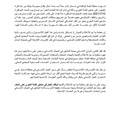Major qualitative surgical procedure using the Mitrofanoff Procedure
The symptoms of urination disorder began to appear on the child Mohammed (4 and a half years old), who lives with his displaced family from the town of Sinjar, in one of the random camps west of Idlib.
Muhammad's illness burdened his father, who lives in poverty, with his family of 3 children and his wife, since the moment of his displacement five years ago.
After consulting several doctors, the child was transferred to Bab al-Hawa Hospital, which is supported by SAMS.
The treatment of the child was supervised by Dr. Muhammad Al-Miqdad, a urology specialist at the hospital. “The child visited the hospital with a complaint of urinary families and recurring urinary infections, and after conducting the necessary investigations, it was found that he had a spastic bladder of 75 ml, with hydronephrosis and ureters on both sides, with damage to the renal function, and no The ability to empty the bladder with a vesicoureteral root," says the doctor.
And he continues: "A large, qualitative 6-hour surgical procedure was performed, during which the ureters were transplanted, with the Mitrofanoff procedure (bladder anastomosis with the skin of the abdomen using the appendix), with the Bladder Augmentation being expanded with a piece of the small intestine (ileum)."
Muhammad was discharged from the hospital after several days, as his general condition improved and the functions of the kidneys improved. The father breathed a sigh of relief after his son got rid of this problem and the child returned to his health and activity






